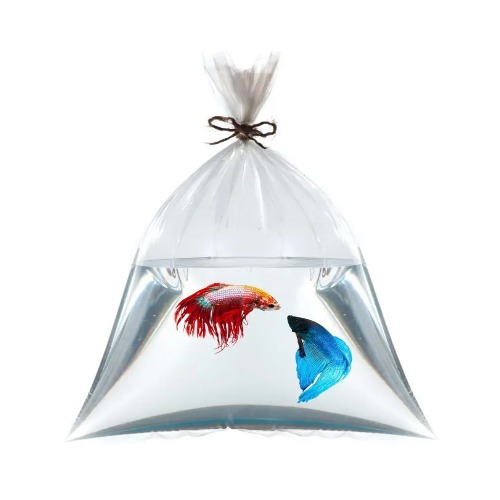Betta fish, also known as Siamese fighting fish, are popular pets due to their vibrant colors and unique personalities. However, transporting them can be a daunting task, especially if you are a first-time fish owner. Whether you are moving houses or simply taking your betta fish on a road trip, it’s important to know how to transport them safely and comfortably.
In this article, we’ll provide you with the essential tips and tricks to make transporting your betta fish a stress-free experience. From choosing the right container to preparing the water and ensuring proper ventilation, we’ve got you covered. So, let’s dive in and learn how to transport your betta fish with ease!
Transporting a betta fish requires careful planning to ensure the fish’s safety and comfort. Here are the steps to transport a betta fish:
- Remove the fish from its tank and place it in a plastic bag filled with tank water.
- Put the bag in an insulated cooler with a warm water bottle to maintain temperature.
- During long trips, change the water every 4-6 hours to maintain oxygen levels.
- Upon arrival, acclimate the fish to its new tank by gradually adding water from the new tank to the bag.

Transporting a Betta Fish: Tips and Guidelines
Transporting a betta fish can be a challenging task, especially if you are traveling long distances. Betta fish are delicate creatures that require a specific environment to live and thrive. If you are planning to move your betta fish to a new location, it’s essential to follow some guidelines and safety measures to ensure their comfort and safety during the journey.
1. Preparing for Transport
Before you begin the transportation process, it’s crucial to prepare the necessary supplies and equipment. You will need a suitable container, such as a fish bag or plastic container, that is large enough to accommodate your betta fish and some water. It’s also essential to have a water conditioner, a thermometer, and a net to transfer your fish.
When preparing the container, it’s crucial to fill it with water that has been treated with a water conditioner. Ensure that the water temperature is similar to the temperature in the betta fish’s tank. It’s advisable to use some of the water from the betta fish’s tank to help maintain the water’s pH level.
2. Bagging the Fish
Once you have prepared the container, it’s time to bag your betta fish. Using a net, carefully transfer your betta fish into the container. Avoid touching the fish with your hands to prevent damaging their delicate fins and scales.
Gently bag the betta fish by filling the bag with enough air to provide oxygen for the fish. Tie the bag securely, removing any excess air to prevent the bag from popping during transport.
3. Transporting the Fish
When transporting your betta fish, it’s essential to keep the container upright and stable. Avoid exposing the container to direct sunlight or extreme temperatures, as this can cause stress and harm to the fish. Consider using a cooler or insulated bag to regulate the temperature during transport.
If you are traveling by car, secure the container in a stable position, ensuring that it doesn’t move around during the journey. If you are traveling by plane, contact the airline beforehand to ensure that you follow their guidelines on transporting live animals.
4. Unpacking the Fish
Once you arrive at your destination, it’s essential to unpack your betta fish carefully. Open the bag slowly, allowing the fish to adjust to the change in environment gradually. Transfer the fish to its new tank, ensuring that the water temperature and pH level are similar to the previous environment.
It’s advisable to add some aquarium salt to the new water to help reduce stress and prevent any infections or diseases. Monitor the fish closely for the first few days to ensure that they are adjusting well to the new environment.
5. Benefits of Transporting a Betta Fish
Transporting your betta fish can be beneficial in many ways. It allows you to relocate your fish to a better environment, especially if the current tank is too small or overcrowded. It also gives you the opportunity to introduce your betta fish to new tank mates and enrich their social life.
Transporting your betta fish can also be an excellent opportunity to clean the tank thoroughly and remove any debris or harmful chemicals that may affect the fish’s health.
6. Transporting Betta Fish vs. Other Fish
Transporting betta fish requires more care and attention than transporting other fish species. Betta fish are sensitive creatures that require a specific environment to thrive, and any slight change can cause stress and affect their health.
Unlike other fish species, betta fish should not be transported in a plastic bag for an extended period, as this can cause damage to their fins and scales. It’s essential to use a suitable container and ensure that the water temperature and pH level are similar to the previous environment.
7. Conclusion
Transporting a betta fish can be a daunting task, but with the right preparation and equipment, it can be a smooth and stress-free process. Remember to prepare the necessary supplies, bag the fish carefully, transport the container in a stable position, and unpack the fish gradually.
Transporting your betta fish can be beneficial in many ways, such as relocating to a better environment, introducing them to new tank mates, and cleaning the tank thoroughly. Always remember to prioritize your betta fish’s safety and comfort during transport to ensure a healthy and happy fish.
Frequently Asked Questions
Transporting a Betta fish can be tricky, especially if you are new to fish keeping. Here are some frequently asked questions regarding how to transport a Betta fish.
1. How do I prepare my Betta fish for transport?
Before transporting your Betta fish, it is important to make sure it is healthy and comfortable. Feed your Betta fish a small amount of food the day before transport, and do not feed it on the day of transport. This will help reduce the amount of waste in the water during transport. Make sure to clean the tank and change the water a day or two before transport. You can also add some aquarium salt to the water to help reduce stress.
When it is time for transport, gently transfer your Betta fish to a plastic bag or container that has been filled with water from its tank. Make sure the container is sealed tightly and kept upright during transport. Keep the container in a dark, quiet place to reduce stress on the fish.
2. Can I transport my Betta fish in a bowl?
No, it is not recommended to transport your Betta fish in a bowl. Bowls do not provide enough space or oxygen for fish during transport, which can be very stressful and harmful to their health. Instead, use a plastic bag or container that has been filled with water from their tank. This will provide enough space and oxygen for the fish to survive the transport.
It is also important to make sure the container is sealed tightly and kept upright during transport to prevent any leaks or spills.
3. How long can I transport my Betta fish for?
It is best to transport your Betta fish for no longer than 4-6 hours at a time. Any longer than this can be very stressful and harmful to their health. If you need to transport your Betta fish for longer than 4-6 hours, make sure to take breaks along the way to give them a chance to rest and recover.
During breaks, you can open the container and let some fresh air in. You can also add some aquarium salt to the water to help reduce stress. Just make sure to keep the container sealed tightly and upright during transport.
4. Can I transport my Betta fish with other fish?
No, it is not recommended to transport your Betta fish with other fish. Betta fish are known for their aggressive behavior, especially towards other fish. Transporting them with other fish can cause stress, injury, and even death. It is best to transport your Betta fish alone in a container that has been filled with water from their tank.
If you need to transport multiple Betta fish, make sure to keep them in separate containers to prevent any fighting or stress.
5. How do I acclimate my Betta fish after transport?
After transport, it is important to acclimate your Betta fish to their new environment. Slowly introduce them to the water in their new tank by adding a small amount of water from their transport container to their new tank every 10-15 minutes. This will help them adjust to the new water temperature and chemistry.
It is also important to monitor your Betta fish closely for the first few days after transport to make sure they are healthy and comfortable in their new environment.

HOW TO PROPERLY PUT YOUR BETTA FISH INTO ITS NEW TANK/HOME!! | ItsAnnaLouise
In conclusion, transporting a Betta fish requires careful planning and preparation to ensure their safety and well-being. It is important to choose the right transport container and acclimate the fish to its new environment before and after the journey.
Remember to avoid sudden temperature changes, keep the fish in a dark and quiet place during the journey, and monitor its behavior and health throughout the process. With these tips in mind, you can safely transport your Betta fish to its new home without any stress or harm.
So, whether you are moving to a new house or taking your Betta fish on a vacation, make sure to follow these guidelines and give your fish the care and attention they deserve. With proper care, your Betta fish will thrive and bring joy to your life for years to come.
